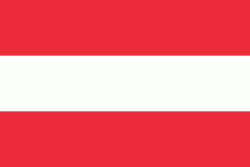Spittal an der Drau (Politischer Bezirk Spittal an der Drau)
Bezirk Spittal an der Drau is an administrative district (Bezirk) in the state of Carinthia, Austria.
With an area of the district is 2,763.99 km², it is Austria's second largest district by area (after Liezen), even larger than the Austrian state of Vorarlberg, and by far the largest district in Carinthia. The administrative centre is Spittal an der Drau, other major settlements are Gmünd, Greifenburg, Millstatt, Obervellach, Radenthein, Seeboden, Steinfeld, and Winklern.
Together with the neighbouring districts of Hermagor and Feldkirchen, Spittal forms the Upper Carinthia (Oberkärnten) region according to the Nomenclature of Territorial Units for Statistics (NUTS). It borders on East Tyrol (Lienz District) in the west and the Austrian state of Salzburg in the north.
The mountainous area comprises the southern ranges of the High Tauern and the Möll valley, the western Gurktal Alps (Nock Mountains), as well as the broad Drava Valley and the northern slopes of the Gailtal Alps. The highest point is the peak of the Grossglockner, Austria's highest mountain at 3798 m. The district also includes Millstätter See and Weissensee, two of the major Carinthian lakes.
With an area of the district is 2,763.99 km², it is Austria's second largest district by area (after Liezen), even larger than the Austrian state of Vorarlberg, and by far the largest district in Carinthia. The administrative centre is Spittal an der Drau, other major settlements are Gmünd, Greifenburg, Millstatt, Obervellach, Radenthein, Seeboden, Steinfeld, and Winklern.
Together with the neighbouring districts of Hermagor and Feldkirchen, Spittal forms the Upper Carinthia (Oberkärnten) region according to the Nomenclature of Territorial Units for Statistics (NUTS). It borders on East Tyrol (Lienz District) in the west and the Austrian state of Salzburg in the north.
The mountainous area comprises the southern ranges of the High Tauern and the Möll valley, the western Gurktal Alps (Nock Mountains), as well as the broad Drava Valley and the northern slopes of the Gailtal Alps. The highest point is the peak of the Grossglockner, Austria's highest mountain at 3798 m. The district also includes Millstätter See and Weissensee, two of the major Carinthian lakes.
Map - Spittal an der Drau (Politischer Bezirk Spittal an der Drau)
Map
Country - Austria
 |
 |
| Flag of Austria | |
Austria emerged from the remnants of the Eastern and Hungarian March at the end of the first millennium. Originally a margraviate of Bavaria, it developed into a duchy of the Holy Roman Empire in 1156 and was later made an archduchy in 1453. In the 16th century, Vienna began serving as the empire's administrative capital and Austria thus became the heartland of the Habsburg monarchy. After the dissolution of the Holy Roman Empire in 1806, Austria established its own empire, which became a great power and the dominant member of the German Confederation. The empire's defeat in the Austro-Prussian War of 1866 led to the end of the Confederation and paved the way for the establishment of Austria-Hungary a year later.
Currency / Language
| ISO | Currency | Symbol | Significant figures |
|---|---|---|---|
| EUR | Euro | € | 2 |
| ISO | Language |
|---|---|
| HR | Croatian language |
| DE | German language |
| HU | Hungarian language |
| SL | Slovene language |


















